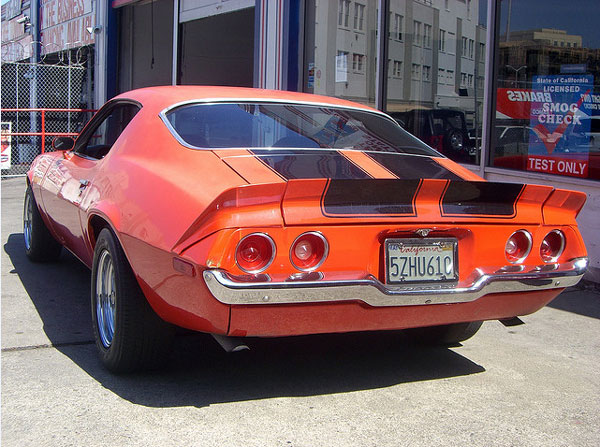Before you take your car in for a smog check, is there anything you can do to give it a better chance of passing? The obvious answer is to make sure your car is running well in the first place. A well-maintained car, with all its systems operating correctly, will probably pass the smog test in your state. However there are simple steps you can take to tilt the odds of passing a smog check in your favor:
Image by Todd Lappin
Get a pre-inspection. In some states, smog check stations will do a less expensive pre-inspection that shows if a car will pass or fail without officially recording the results with the state’s registry of motor vehicles. If it fails, have the work done then.
Is the “Check Engine” light on? If your car displays the Check Engine light, that’s an automatic failure for most state inspections. The most common reason for a Check Engine light being illuminated is a faulty oxygen sensor. An oxygen sensor in an older car is approximately $150 or so. Of course, there are many other reasons that a check engine light can be illuminated but you should have your mechanic look at it before you bring in your car for a state inspection.
Drive the car at highway speeds prior to the smog test. This gets the catalytic convertor hot enough to burn off any oil and gas residues. The catalytic converter, mandated by federal law in 1974 for all U.S. cars and trucks, converts harmful pollutants into less harmful emissions before they leave the exhaust system. By driving the car at highway speeds for an hour or two, the catalytic convertor will burn off residues that could cause you to fail your smog test.
Change the oil (but only if it needs it). Dirty oil in the crankcase can release additional pollutants which could cause the car to fail the smog test.. While the mechanic is changing the oil, ask him to do a visual inspection of the car’s engine to see if any hoses are cracked, broken or disconnected too.
Make sure the tires are properly inflated. Many states require a dynamometer test which positions the car’s tires on rollers that allow the engine to run at highway speeds while it is stationary. If the tires are under-inflated, the car’s engine works a little harder to achieve the engine revolutions required by the test. Most mechanics will do this for your prior to the test but some may not.
Use a fuel additive. Older cars could have clogged fuel injectors causing them to run lean. Injector additives can clean the small openings and help the car pass the smog test.
Make sure the engine is warmed up. Before you drop off your car at the inspection station, make sure it is warmed up. A drive for 10-15 minutes should ensure that. Then all mechanical systems are operating at the temperatures they are designed to operate at and emissions will be at a minimum.
Source: http://www.deerybrotherschryslerdodgejeepram.com/passing-smog-inspection.htm
Tags: car inspection, car maintenance, smog test
